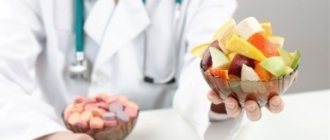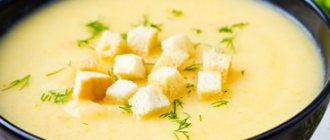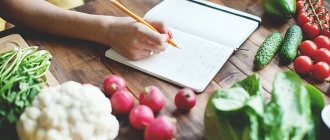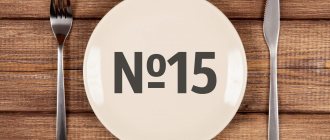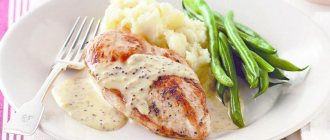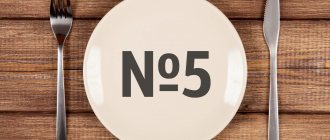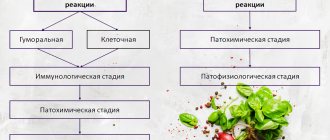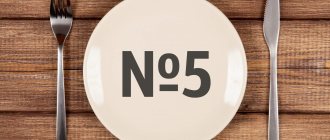body .attr-article__date{ background: none; padding: 0; }
NEAD EAD SEAD South Administrative District South-Western Administrative District CJSC Central Administrative District SZAO Northern Administrative District 01 02 03 05 06 07 08 09 1 0 1 1 1 2 14 18 15 16 17 Babushkinskaya Prospekt Mira Pervomaiskaya Baumanskaya Paveletskaya Teply Stan Shipilovskaya Prague Academic University Barrikadnaya River Station Oktyabrskoye Bratislava Taganskaya Academician Yangelya October Field
The call center is open 24 hours a day
Ambulance 24/7
Home Health from A to Z Useful information Diet No. 6
Publication date: 05/19/2021
until January 31
You get 10% cashback when purchasing a gift certificate More details All promotions
General characteristics of dietary table No. 6
Diet No. 6 satisfies human physiological needs for nutrients and energy, and is enriched with plant fiber. Nitrogenous extractives (purines), oxalic acid, and foods rich in essential oils are sharply limited. Meat, poultry and fish - no more than 3 times a week in small pieces. Food is prepared steamed, boiled and baked. Diet No. 6 provides for fractional meals 4-6 times a day. You must drink permitted drinks on an empty stomach and between meals.
Nutrition for acute gout
Exacerbation of gout is accompanied by a number of unpleasant symptoms:
One of the signs of an exacerbation of gout is attacks of acute arthritis. Such attacks develop suddenly. Two to three days before the attack, chills, low-grade fever, dyspeptic disorders, and general irritability may appear. During an attack, the metatarsophalangeal joint of the first toe is most often affected. Pain appears and quickly increases, the joint swells, the skin over it turns red, and the temperature in the joint area rises. The pain intensifies from any touch, even from touching the sore joint to the blanket. After a few days, the symptoms of arthritis gradually subside, mobility is restored and the patient feels practically healthy until the next attack.
During the period of exacerbation of the disease, you need to switch to an almost vegetarian diet. It is necessary to completely exclude all meat and fish from the diet. You can eat liquid milk porridges, vegetable soups, fruits and berries. Maintain drinking regime. You need to drink about 1.5 liters of water per day. You can drink alkaline mineral water.
Chemical composition and energy value of dietary table No. 6
Proteins: 85–90 g (40–45 g animal proteins). Fats: 70–80 g (including 30 g of vegetable fats). Carbohydrates: 300–330 g (including no more than 30–40 g of simple carbohydrates). Daily calorie content: 2,200 – 2,400 kcal. Free liquid: 1.5–2 l. Table salt: 6–8 g Vitamins: retinol (A) – 0.5 mg, riboflavin (B2) – 2 mg, thiamine (B1) – 1.5 mg, nicotinic acid (B3) – 15 mg, ascorbic acid ( C) – 150 mg. Macroelements: sodium – 4 g, potassium – 3.5 g, calcium – 0.8 g, magnesium – 0.5 g, phosphorus – 1.3 g. Microelements: iron – 35 mg. Optimal food temperature: from 15 to 65 degrees Celsius.
Comments from nutritionists. Pros and cons of the diet.
Treatment of gout at the Gorny sanatorium necessarily includes dietary nutrition. Patients receive recommendations on how to eat properly if they have gout at home, which helps avoid exacerbations and complications.
“The right choice of a sanatorium is a significant step towards maintaining and increasing health. “Gorny” is a resort complex that combines the experience and knowledge of Russian and Soviet balneology. The presence of modern medical equipment and innovative installations, the professionalism of the staff and love for their work will serve as the key to extending longevity,” - head doctor of the sanatorium Alexander Olegovich Karaulov.
Recommended products and dishes of the diet table No. 6
Bread: any. Soups: vegetarian vegetable and cereal soups. Meat dishes: lean meat and poultry must be boiled first and only then used for cooking. Fish dishes: lean fish must be boiled first and only then used for cooking. Side dishes: any cereals – in moderation; any vegetables. Dairy products: milk, cottage cheese; any fermented milk products, fresh and in dishes. Eggs: no more than 1 egg per day in any form. Appetizers: vegetable salads from fresh, soaked, pickled vegetables. Sauces: vegetable (including tomato), dairy. Sweet dishes: any fruits and berries in any form in increased quantities, especially citrus fruits; jelly, milk cream, marshmallow, marmalade, marshmallow, jam, honey. Drinks: weak tea and coffee with and without milk, bran decoction, rosehip decoction, juices, alkaline mineral waters. Fats: fresh vegetable oil.
Menu for table No. 6
Sample menu for a week for patients with gout and urolithiasis.
First day
Breakfast: cottage cheese pancakes, honey, chamomile decoction.
Lunch: a handful of prunes, homemade compote.
Lunch: soup with rice and bell pepper, mashed potatoes with stewed meat (70 g), bread.
Dinner: grilled or oven-baked vegetables, boiled beef (80 g).
Before bed: decoction of rose hips.
Second day
Breakfast: oatmeal with pieces of ripe apple and banana, chicory with milk.
Lunch: bran bread toast, jam, alkaline mineral water.
Lunch: milk soup with noodles, fresh vegetable salad.
Dinner: a piece of fish, stewed carrots and zucchini, bread.
Before bed: natural drinking yogurt.
The third day
Breakfast: soft-boiled egg, boiled milk sausage, fresh cucumbers, chicory drink.
Lunch: cottage cheese pasta with fresh fruit.
Curd paste: rub 200 g of low-fat cottage cheese through cheesecloth or a fine sieve. In a separate bowl, grind 50 g of sugar, 10 g of vanillin and 15 g of unsalted butter. Combine the two masses and add two tablespoons of sour cream, stir everything well. The finished paste can be used as a separate dessert or mixed with fruits and prunes.
Lunch: vegetarian beetroot soup, a little sour cream, pasta with chicken quenelles.
Dinner: potato casserole with hard cheese.
Casserole with cheese: cut raw potatoes into slices and place in a greased pan, alternating with grated cheese. The last layer should be cheese, put a few pieces of unsalted butter on it and pour over 100 ml of milk. Bake under foil or lid.
Before bed: chamomile decoction.
Fourth day
Breakfast: potato pancakes, sour cream, green tea.
Lunch: cottage cheese with mashed prunes and nuts, milk.
Lunch: soup with rice, potatoes and vegetables, vinaigrette, separately steamed meatballs, bread.
Dinner: fish jackdaws, steamed carrots, green beans.
Fish jackdaws: mince 200 g of pike perch fillet (with skin included). Pour 50 ml of milk into the minced meat and add 10-15 g of starch. Form oblong jackdaws and place them in boiling salted water for 10 minutes.
Before bed: bran decoction.
Day five
Breakfast: omelette of one egg, milk and wheat flour, vegetable salad, tea.
Lunch: fresh fruit (salad or smoothie), some walnuts.
Lunch: borscht without meat, sour cream, buckwheat porridge.
Dinner: pilaf with prunes, freshly squeezed juice.
Before bed: milk.
Day six
Breakfast: apple and carrot salad, toast with jam, chicory.
Lunch: berry jelly or jelly.
Lunch: tomato soup, oatmeal, rabbit or beef cutlet, bread.
Dinner: stuffed peppers with sour cream.
Before bed: fresh carrots.
Day seven
Breakfast: sandwiches with cheese, plain yogurt, tea.
Lunch: cottage cheese, berry juice.
Lunch: soup with barley and vegetables, potato cutlets in sour cream.
Dinner: a piece of boiled lean pork, fresh vegetable salad, buckwheat porridge.
Before bed: kefir.
Patients with gout are prescribed fasting days, 1-2 times a week. To unload, you can choose one product and eat only it throughout the day. Low-fat or calcined cottage cheese is well suited for such purposes. On a fasting day, you need to consume 150 g of it every time you feel hungry. It is forbidden to completely starve, this leads to even greater accumulation of uric acid in the blood.
So, for uric acid diathesis and gout, table number 6 is used. The diet excludes foods that contain a lot of purines. The therapeutic menu consists of alkaline foods that help remove breakdown products of nitrogenous substances from the body. As a result of such a diet, the patient gradually normalizes the correct process of excretion of uric acid, urine stones are broken down and new ones do not form.
What is possible
The diet should be healthy and balanced: a type of diet similar to vegetarian is perfect. Vegetable or milk soups, fruits, and fermented milk products will be useful. Those with a sweet tooth can afford dried fruits, milk jelly, non-chocolate candies, and jam. Also, a diet for heel spurs can include almost any vegetables. The diet should also consist of the following products:
- Nuts and seeds
- Porridge with milk diluted with water
- Cheese, if it is a low-fat variety
- Herbal drinks
Doctor's opinion
Diet 6 was developed by physician Pevzner to improve the metabolism of uric acid in gout. At the same time, first of all, it was possible to achieve a decrease in the flow of nucleotides into the human body, which accordingly affected the course of gout. Within a few days after starting food intake, the patient’s general condition improved, and the frequency, duration and severity of gout attacks decreased. By reducing the functional load on the digestive organs, their work improves, dyspeptic symptoms, including bloating (flatulence), stool disorders, and discomfort in the stomach, are reduced. In the presence of concomitant obesity, the use of a modified diet 6 made it possible to reduce the patient's body weight. Dietary recommendations can be carried out in a medical hospital or at home. Table 6 is recommended for people with a hereditary predisposition to the development of gout to prevent pathological disorders of nucleotide metabolism.
Prohibited Products
There are a number of the following food products, the intake of which is excluded while using diet 6:
- Any broths based on meat or fish, as well as sauces prepared on their basis.
- Legumes, green beans, peas, sorrel and any products made from them.
- Offal.
- Fatty meat (pork, lamb, duck, goose), smoked meat, sausage.
- Almost any dried fruit except prunes.
- Confectionery with powdered sugar, muffins, chocolate.
- Marinades, pickles.
- Mushrooms in any form.
- Rhubarb, cauliflower, spinach.
- Salty hard cheeses.
- Cocoa, hot chocolate, strong black coffee, tea.
- Spices, mustard, black pepper, horseradish.
- Raspberries, cranberries.
- Alcoholic drinks.
Recipes for the sick
The diet contains a large number of products from which you can prepare various dishes according to the season.
You need to diversify your diet with new dishes. Whole grain buns
Ingredients for 4-5 pieces: 100 g oat bran, 100 g whole grain flour, 200 ml kefir, 1 teaspoon olive oil, 1 teaspoon baking powder, salt, herbs (to taste).
Recipe:
- 1. Mix oat bran with kefir and let stand for 15-20 minutes.
- 2. Mix flour with baking powder.
- 3. Mix with bran, add flour gradually and mix.
- 4. Knead the dough, it should be elastic and soft.
- 5. Add oil, salt, herbs. Knead again.
- 6. Form buns and place in the oven for 30 minutes at 180 degrees. If you bake buns on parchment, then grease the parchment with butter.
Oat cookies
Ingredients: oatmeal – 200 g, unsweetened yogurt – 300 g, apples – 2 pcs., dried fruits – 50 g, cinnamon to taste.
Recipe:
- 1. Pour yogurt over oatmeal and stir. Leave to swell for a short time (20 minutes).
- 2. Grate the apple without peel on a coarse grater, chop the dried fruits with a knife.
- 3. Mix apple, dried fruits, cinnamon, cereal.
- 4. Form cookies into small balls and place on baking parchment. Bake at 180 degrees for 40 minutes.
Contact Information
Foods rich in purine (should be excluded from the diet):
— Meat of young animals and all parts of the animal that provide a sticky broth (head, legs, etc.); — Broths (meat, chicken, fish, mushroom), meat sauces , jelly ; — Meat extracts (batch soups); — Smoked meats ; — Offal (heart, kidneys, liver, brains, etc.) and dishes made from them; - Fatty fish - during exacerbation, salted fish, fried fish; canned fish (anchovies, herring, sardines, sprats, sprat), caviar; — Salty and sharp cheeses ; - Spices (pepper, horseradish, mustard) with the exception of bay leaf, vinegar and salt, - Drinks that stimulate the nervous system: strong tea , coffee , cocoa ; — Cooking and other fats of animal origin; — Cream cakes , pastries , chocolate ; — Pork and products made from it; — Products containing a preservative (canned food, juices, water); — Legumes (lentils, peas, beans, beans, soybeans); — Raspberries, figs, grapes and all grape products (raisins, wine, cognac, etc.); — Alcoholic drinks that increase the content of uric acid and impair its excretion by the kidneys.
It is necessary to limit the consumption of the following products:
- Salt; — Sausages (cooked sausage and non-smoked sausages are allowed); — Consume boiled meat and boiled fish in limited quantities. Preference: poultry, salmon, salmon, haddock, trout, mackerel; - Cauliflower, asparagus, sorrel, spinach, rhubarb, celery, pepper, radish, turnip (since gout is almost always accompanied by a disturbance in the metabolism of other salts - oxalates); Tomatoes (maximum 2-3 pieces per day); — Green onions, parsley; — Mushrooms (white mushrooms, mushrooms, champignons); — Pickles and marinades; - Plum; — Lard; Butter; Milk (allowed in cereals, tea).
Authorized products
— Vegetarian: soups, borscht, vegetable cabbage soup, potato cabbage soup, with the addition of cereals, dairy, cold; - Turkey, rabbit; — Squid, shrimp; — Low-fat boiled fish, 160-170 g, up to 3 times a week; — Dairy products: fermented milk drinks, cottage cheese, dishes made from it, sour cream, low-fat cheeses; — Milk in small quantities when added to cereals and drinks; — Eggs (from three pieces per week to 1 per day for any cooking); - Cereals, pasta - any, in moderation; — White cabbage, carrots, potatoes, cucumbers, zucchini, eggplants; allowed vegetables - in increased quantities, raw or in any cooking; vegetable, squash, eggplant caviar (freshly prepared); — Dried fruits (except raisins), honey; — Nuts (pine, avocado, almonds, pistachios, hazelnuts), seeds; - Sweets - jam, marmalade, marshmallows, marshmallows; — Drinks — green tea, tea with lemon, milk, weak coffee (substitute) with milk, rosehip infusions, wheat bran, fruit, berry, vegetable juices, fruit drinks, kvass, compotes. Drinks made from lingonberries and cranberries are especially valuable; — Helps remove excess purines from the body: cucumber juice (up to 1 glass per day), alkaline mineral waters (low mineralized), (“Naftusya”, “Essentuki No. 17”, “Narzan”, “Borjomi”); — Green apples, citrus fruits, gooseberries, berries (except raspberries), watermelons; — Black bread, preferably based on rye flour, wheat bread in limited quantities; - Dill; — Vegetable oil (necessarily olive, linseed).
Diet No. 6.
Indicated for gout, urolithiasis with the formation of stones from urate and oxalate salts.
Basic provisions: The diet contains a normal amount of fats (80-90 g), carbohydrates (400-450 g), a reduced amount of proteins (70-80 g) and table salt (up to 5 g), an increased amount of liquid (2-2.5 l ).
Meat and fish are prepared only boiled. Patients should eat 4-5 times a day. The food temperature is normal. Recommended:
Gray wheat and rye bread, white bread and pastry products in limited quantities. Shchi, borscht, rassolnik, beetroot soup, dairy, vegetarian and fruit soups. Lean varieties of meat and fish 1-2 times a week. Various vegetables, fruits, berries in their natural form and in various forms of preparation, fasting days using raw vegetables and fruits. Dishes of cereals and pasta in moderation. Eggs - 1 pc. in a day. Milk, lactic acid products, cottage cheese and dishes made from them. Tomato, milk, sour cream sauces. Citric acid, parsley and dill. Alkaline mineral waters, rosehip decoction, weak tea with milk. Vegetable and butter. Excluded:
Sharp cheese, brains, liver, kidneys, lungs, veal, game, meat, fish and mushroom broths, sausages, herring, canned fish and meat, smoked meats, legumes, figs, raspberries, lingonberries, spinach, sorrel, lettuce, rhubarb, horseradish, mustard, black pepper, natural coffee, cocoa, strong tea.
Remember that gout is a metabolic disease and therefore the patient’s condition and the frequency of exacerbations is directly related to excess weight. The closer the patient’s weight is to the recommended norm, the greater the opportunity to control exacerbations or avoid attacks of gouty arthritis altogether!
prepared by Savonevich O. M.
Features of fasting days
During an exacerbation of the disease, therapeutic fasting is unacceptable. A complete refusal to eat will cause the condition to worsen. Fasting days can significantly improve the patient's condition.
Options for fasting days:
- vegetable on vegetables and fruits;
- kefir-curd;
- rice
During a plant-based diet, it is recommended to eat one type of permitted fruit or vegetable. Salads are acceptable. Most often, apple day is used as a fasting day; you can eat no more than 250 g of apples per day.
During the kefir-curd fasting day, you can eat 0.4 kg of low-fat cottage cheese and 0.5 liters of kefir.
A rice fasting day consists of 75 g of rice and 1 apple. They should be eaten in small portions throughout the day.
It is recommended to drink compote made from apples on such days. No need to add sugar.
Indications
There are several main medical indications, in the presence of which diet 6 is prescribed, these include:
- Gout.
- Uric acid diathesis with an increased likelihood of the formation of insoluble stones in the hollow structures of the urinary tract.
- Uraturia is an increased excretion of insoluble urate salts in the urine.
- Urolithiasis - diet 6 is a prerequisite for successful treatment of the formation of insoluble stones in the hollow structures of the urogenital tract, as well as for the prevention of the pathological condition.
- Oxaluria is an increase in the concentration of insoluble acid salts of oxalates in the urine, which is the initial stage of the development of urolithiasis.
- Cystinuria is an increase in the level of certain insoluble salts in the urine that have an acidic reaction. The pathological process in most cases is of hereditary origin.
Contraindications
There are several contraindications for using diet 6, these include:
- Individual intolerance to most products that form the basis of table 6 or the development of an allergic reaction in response to their entry into the human body.
- Severe cardiovascular pathology.
- Acute inflammatory kidney diseases.
The presence of contraindications is usually the basis for correction of dietary recommendations. At the same time, the list of permitted products is expanded or narrowed, certain dishes are replaced, as well as the diet. After the correction, it is usually possible to achieve the necessary therapeutic effect from the diet without negative effects on the human body.
Mechanism of therapeutic action
Purine bases (nucleotides) represent a class of organic compounds that are the basis of the genetic material of cells (DNA, RNA). In the human body, they are involved in a complex metabolism, which results in the formation of uric acid, which is excreted in the urine. Gout is a metabolic disease in which the number of enzymes directly involved in nucleotide metabolism decreases. The result is an increase in the concentration of uric acid, the excess of which is deposited in the tissues in the form of crystals of uric acid salts. Some of them often accumulate in the tissues of joint structures, leading to the development of a specific inflammatory process and attacks of pain (attacks of “gouty” joint pain). Diet 6 for gout involves reducing the intake of purine bases into the human body, thereby reducing the concentration of uric acid in the blood and its salts in tissues.
Due to the reduced content of oxalic acid in the diet, it is possible to reduce the intensity of the formation of insoluble stones, therefore diet 6 helps prevent the development of urolithiasis. The table mainly includes food products that affect the reaction of urine, causing it to become alkaline. This leads to partial dissolution of already formed acid salts and insoluble stones from them.
Eating at least 4 times a day, reducing the level of refractory fats and extractive compounds have a beneficial effect on the state of the digestive system and the general well-being of a person.
Approximate diet
Diet No. 6 brings noticeable relief both during an exacerbation of gout or urolithiasis, and during the period of recovery from these ailments
A person prepares the “Table 6” diet for gout every day independently. The official diet provides only examples of dishes that can be adopted. Your doctor will give you precise recommendations on strict adherence to the menu.
The daily ration of the “Table 6” diet for gout necessarily includes about 2-3 liters of liquid. Salt can be consumed no more than 5 g.
Monday
- Breakfast: oatmeal with berries, tea, yesterday's bran bun
- Second breakfast: fruit salad
- Lunch: tomato soup, steamed chicken cutlets
- Second lunch: bell pepper and white cabbage salad
- Dinner: cottage cheese casserole with bananas
2-3 hours before going to bed, you can eat an apple or drink a glass of kefir. This late-night snack can be done any day. During the day, you should drink mineral water with an alkaline composition, rosehip decoction, and chicory.
Tuesday
- Breakfast: boiled egg, cucumber and tomato salad, rye toast
- Second breakfast: 100 g low-fat cottage cheese with a spoon of honey
- Lunch: potato soup with chicken meatballs, rice with vegetables, rosehip broth
- Second lunch: salad with seaweed, apple
- Dinner: fruit salad, a glass of low-fat kefir
Wednesday
- Breakfast: buckwheat porridge with milk diluted with water
- Second breakfast: cheesecake with honey
- Lunch: vegetarian borscht, beet salad, steamed fish cutlets
- Second lunch: salad of white cabbage and carrots, jelly with berries
- Dinner: rice with vegetables
Thursday
Cabbage and tomato salad - tasty and healthy
- Breakfast: boiled beet salad with low-fat sour cream, rye bun
- Second breakfast: cabbage and tomato salad
- Lunch: onion soup with croutons, pearl barley porridge with cabbage cutlet
- Second lunch: a glass of fresh berries
- Dinner: chicken meatballs with rice
Friday
- Breakfast: cottage cheese with berries and honey
- Second breakfast: apple and orange
- Lunch: potato soup with barley, vinaigrette
- Second lunch: one steamed chicken cutlet
- Dinner: vegetable cabbage rolls with rice, but without meat
Saturday
- Breakfast: semolina porridge with milk
- Second breakfast: fruit salad
- Lunch: vegetable soup, 100 g boiled chicken with boiled zucchini
- Second lunch: beetroot and carrot juice
- Dinner: bell pepper stuffed with rice
